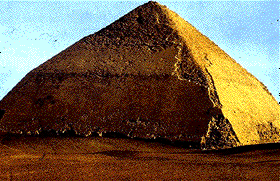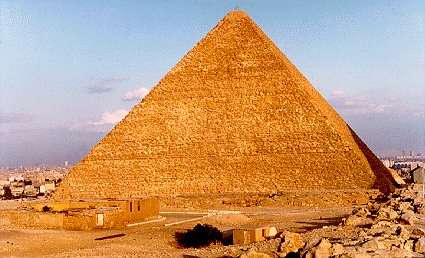The Pyramids of Giza are the oldest and only remaining monuments of the Seven Wonders of the
Ancient World. These massive structures were created as tombs for the rulers of the Old Kingdom
. Even after more than four thousand years of exposure and weathering, the
Pyramids of Giza stand as awe-inspiring monuments to the genius and creativity of a long-dead
culture.The pyramids were tombs made for the pharaohs. Egyptologists currently believe that the design for the Egyptian Pyramid was inspired by the fact
that the sand dunes in the desert naturally form a pyramidal shape, which is very stable, they also believe that they were a stairway to the underworld. The
Pyramids themselves developed out of designs of previous tombs. Early Egyptian tombs were
bench-shaped mounds called mastabas. About 2780 B.C., King Zoser's architect, Imhotep,
designed the first pyramid by layering six mastabas of decreasing size one on top of the other.
Thus, the Step Pyramid was born. This pyramid was used, like its descendants, as a tomb for the
dead king.































